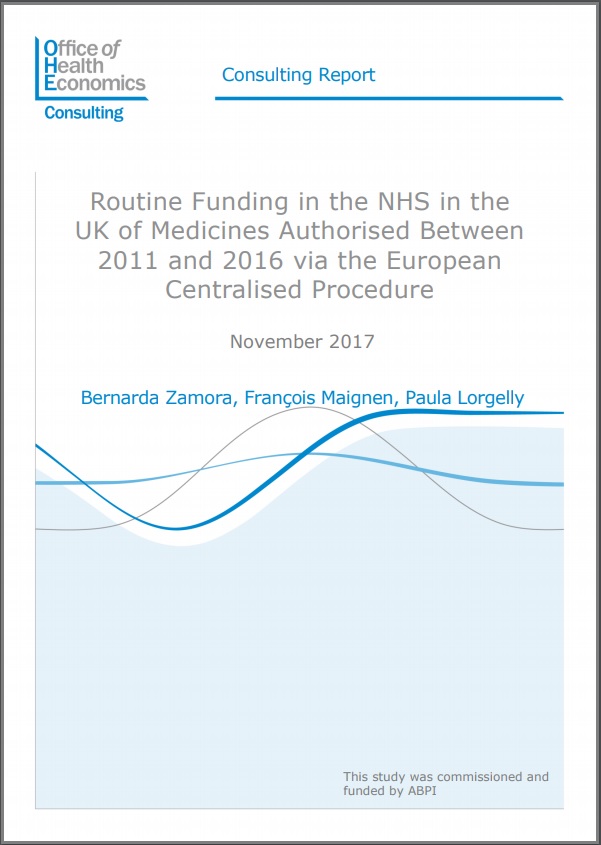Sign up to our newsletter Subscribe
Analysing Global Immunisation Expenditure

The centralised procedure was created in 1995 to facilitate access to innovative medicines across the European Union. Since then the scope of authorisation via the centralised procedure has been broadened and made mandatory for orphan and oncology medicines.
We analysed routine funding in the NHS for new medicines recently authorised via the centralised procedure with a particular focus on oncology and orphan medicines. We utilised a database of outcomes of health technology assessment (HTA) evaluations conducted in the UK by NICE, AWMSG and SMC: OHE’s Medicines Tracker. We considered centrally authorised products (CAP) approved between 1 January 2011 and 31 December 2016.
We find that a substantial number of products that received an EU authorisation between 2011 and 2016 were not referred for a HTA evaluation in the UK. We also show that there is both variation across agencies and variation across therapeutic classes in terms of adoption decisions and access across England, Scotland and Wales.
The centralised procedure was created in 1995 to facilitate access to innovative medicines across the European Union. Since then the scope of authorisation via the centralised procedure has been broadened and made mandatory for orphan and oncology medicines.
We analysed routine funding in the NHS for new medicines recently authorised via the centralised procedure with a particular focus on oncology and orphan medicines. We utilised a database of outcomes of health technology assessment (HTA) evaluations conducted in the UK by NICE, AWMSG and SMC: OHE’s Medicines Tracker. We considered centrally authorised products (CAP) approved between 1 January 2011 and 31 December 2016.
We find that a substantial number of products that received an EU authorisation between 2011 and 2016 were not referred for a HTA evaluation in the UK. We also show that there is both variation across agencies and variation across therapeutic classes in terms of adoption decisions and access across England, Scotland and Wales.
Routine Funding in the NHS in the UK of Medicines Authorised Between 2011 and 2016 via the European Centralised Procedure
